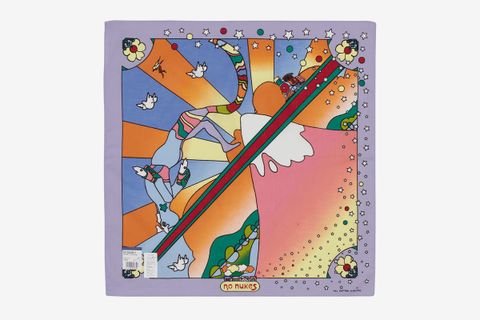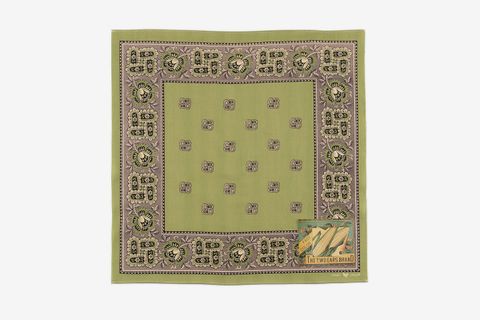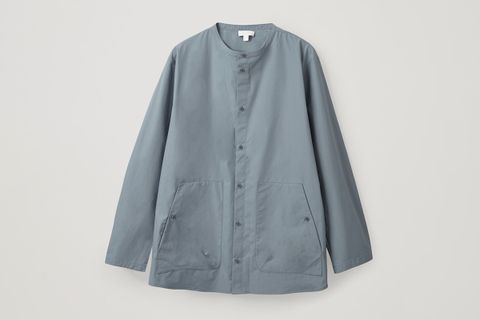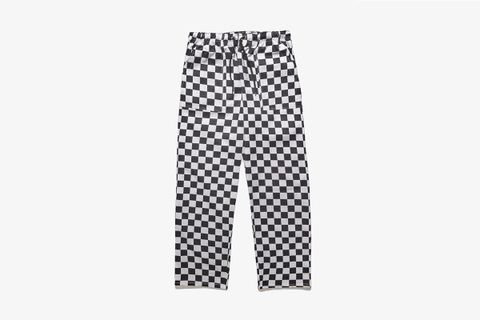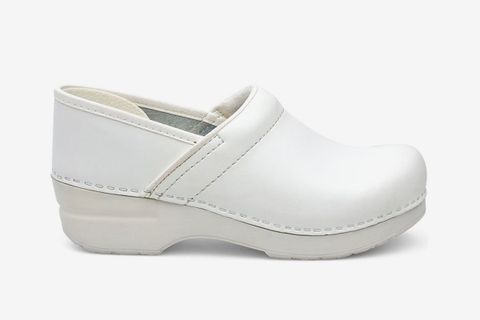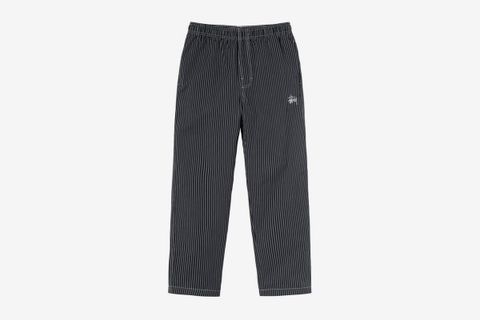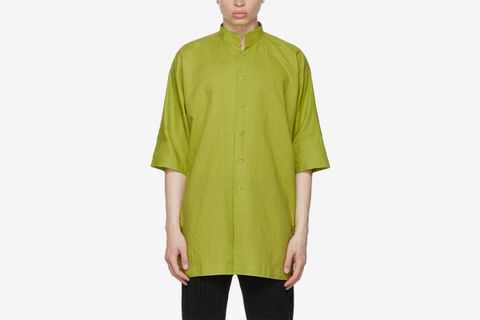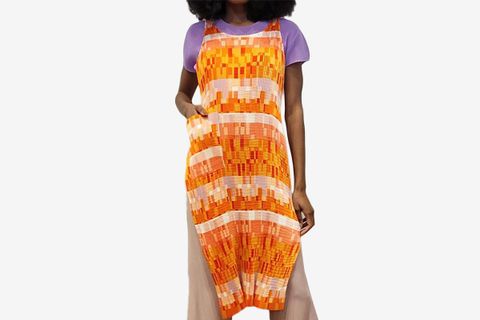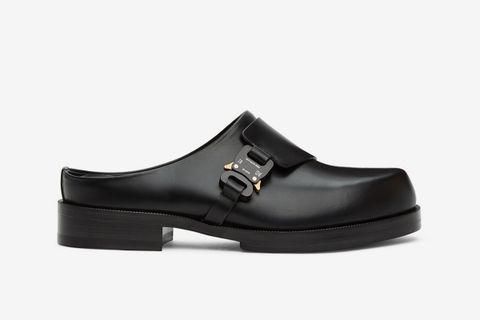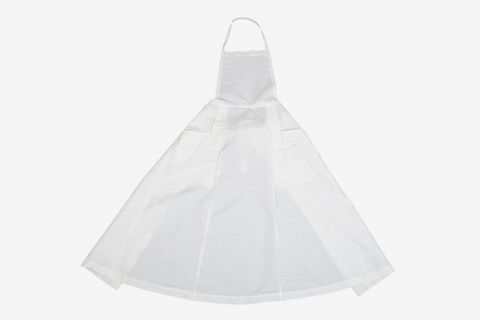Is Chef-Core the Trend We Were Always Hungry For?
There’s a family photo of my mom and myself, toddler-aged, at the park. It’s 1999, she’s pushing me on a swing set, and is looking very cool wearing a zip-up hoodie, white sneakers, and baggy checkered chef pants. At the time, she was working as a caterer, doubling her work uniform as off-duty wear - seamlessly blending the two worlds into a viable, effortless approach to everyday dressing.
I often return to this picture as inspiration for my wardrobe, both in and out of the kitchen (as it were, I’m bummed to say she’s since lost those pants). In the pandemic, I started working full time as a line cook, and have found myself preoccupied with the idea of utility-driven clothes. At work, I have to dress comfortably, wearing things that allow for breathability and movement, and which ease the strain of running around on my feet all day.
But I also want to feel stylish — and, most importantly, like myself — in what I’m wearing. Consequently, my attention has turned to kitchen-inspired pieces that have become increasingly popular with fashion and streetwear brands — think funky rubber Birkenstock clogs, selvedge bandanas from Kapital, or a pair of Stüssy striped chef pants. In the midst of this research, it began to occur to me that the trends we’ve watched explode in the past few years have borrowed heavily from uniforms or lifestyles, or at least distilled and fetishized them to some degree. We’ve seen the arc of the uniform-to-fashion pipeline stretch all the way from the washed-out 501s and Champion crewnecks of normcore and YEEZY military-inspired garments to the cut-off Dickies of workwear and the outdoorsy hype of GORPcore.
This makes sense: there’s something distinctly alluring — and cool — about a uniform. From school uniforms’ posh pleats and loafers (Thom Browne’s entire schtick!) to the ruggedness of Carhartt double knees and Realtree, they all contain a pre-set, culturally established aesthetic mode that we (laymen, non-participants) can easily step into. Uniforms assign us an identity, and a kind of social power, already built-in. Some may usher in ideations of hyper-professionalism and the upper class, while others sway in the opposite direction and garner the authenticity and grit of bluecollarism or crunchy granola types. But more than anything, it engages a part of our imagination with character play and costume, accomplished through the adoption of that vocation or lifestyle’s garments. In short, we’re tapping into a kind of fashion cosplay.
It’s only natural, then, to introduce food industry threads into everyday dressing. It’s simultaneously practical and playful (clogs, from a design standpoint, can come off as a little goofy, but that’s the entirety of their charm). It allows one to move through the world seamlessly and comfortably, both in and out of the kitchen. Also: kitchens are hardcore. Why do you think so many people idolize Anthony Bourdain or the more niche (and far less palatable) Marco Pierre White? It’s because they’re hot-blooded, intensely passionate dudes who have, or had, a penchant for the more extreme sides of life, and have pretty cool style to boot. So maybe in taking on the kitchen uniform, we subconsciously want to take on a little of that tunnel-vision dedication and intensity, as well.
It’s not just men we’re looking to, either. I think of Gabrielle Hamilton, the chef and owner of the New York restaurant Prune, and her subversively femme approach to kitchen clothes. Hamilton is often pictured wearing high buttoned, peter pan-collared kitchen shirts and apron dresses, translating to an individualistic and refreshing take on a stereotypically male-centric silhouette. There’s an entire spectrum of options within the uniform, one which is wide open to interpretation and individual expression.
The hybridized blending of kitchenwear with more street-friendly clothes has become increasingly embraced in kitchens, too - and is a good place to seek out inspiration for our on-duty and off-duty wardrobes alike. Nir Sarig, chef and founder of the bakery project Eti, says that “I don’t really wear kitchen clothes, but take the clothes I wear [in my everyday] into the kitchen...nowadays I feel that this profession needs to be more casual. We kinda ruined the scene in the last 20 years with [restrictive] French kitchen [clothes], and now I feel that in the past few years chefs understand that good food needs to be cooked by happy cooks [who] are enjoying their work.” Interposing utility-bent garments with casual staples — say, pairing these tie-dye Calzuro clogs with jeans and a hoodie — is already being done in kitchens across the country, and is easy to replicate in your own closet. As obvious as it may seem, approaching our wardrobes with a direct, twofold emphasis on comfort and self-expression can be paramount to our overall happiness, and is a style cue that all of us can benefit from when it comes to our attitude toward dressing.
Also, this might go without saying, but considering the hyper-domesticity of this past year, we have spent a lot of time in the kitchen. Prior to the pandemic, our kitchens were already the nucleus of our homes; in the extended time many of us had on our hands over the last 365-plus days, we have spent a good chunk of it cooking, nourishing ourselves and those around us. It feels fitting, then, to embrace this aspect of our current lifestyle in our clothes. We have come to realize the importance of comfort in our lives, and the positivity it can bring in our WFH situations. While we should (most definitely) leave the pandemic-era sweatpants behind, taking on the aesthetics of this domestic space in such an authentic way, - and one that respects the ergonomic design - is a trend that very well may have staying power beyond our next meal.
